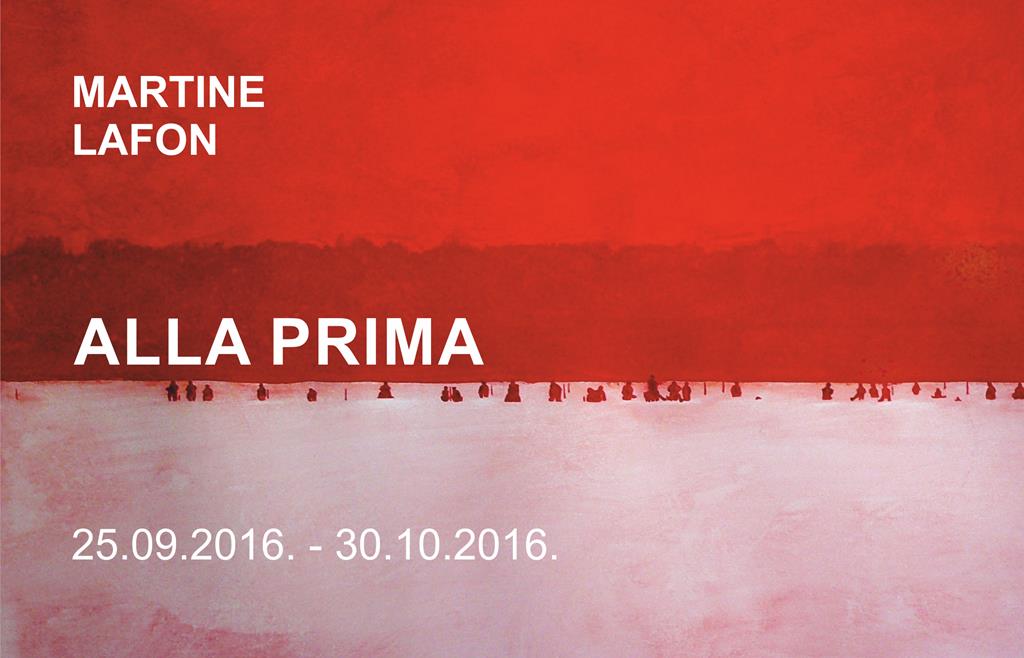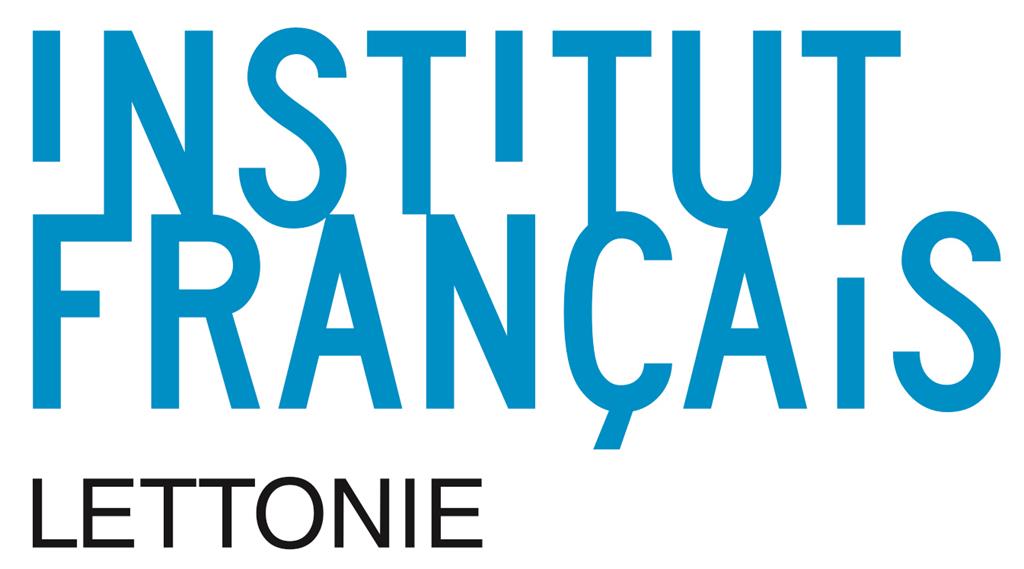MARTINE LAFON. ALLA PRIMA

Exhibition of Martine Lafon “The Colour Wash”
Dedication to the wash of Mark Rothko’s red
Honouring red colour and Rothko
Here – in Daugavpils – Martine Lafon pays respect to large-size paintings and drawings of Mark Rothko. Martine Lafon is interested in the idea of Rothko’s imperceptible landscapes and importance (at times) of wash of colours used by the artist.
The diverse works by Martine Lafon overpower you.
Martine Lafon’s red in motion
The red of Martine Lafon is in constant motion. It troubles, it burns, it fascinates, it dazzles, it fires, it charms, it seduces, it attracts and diverts from the right path. Her red moves, travels, wanders around, pilgrimages and gets lost. It yields to adventures, strolls and rushes.
Flow of the wet and unstable colour
Red is often-present in Mark Rothko’s palette of colours. His colours are flowing, wet, diluted, unstable, moving, bedewed, drenched, and saturated. They seem soggy, sensual, heartfelt, gentle, sensitive, refined, silky, and salacious. They are as moisture-left prints on canvas and paper. Secretions, moods, streams that flow, expand, bubble, ripple, and caresses. Forms that break out.
Michel Butor has written a wonderful essay titled “The Mosques of New York or the Art of Mark Rothko.” He looks at the vicinity of one of Rothko’s works – a sketch panel n ° 1: “Bright-red rectangular ring stands out on a purple background. […] The colour of the ring takes over the background of the sketch […]. The ring fully covers the background; it is as created by it and adherent to it. This is the way how this nighty, dead wine appears to those who pretend to be alive. Michel Butor sees “colour blocks”, “nuances”, “shades”, and “reflections”. He says: “You will be forced to get so close to the painting that your eyes will lose its overall shape and boarders. You’ll be taken over by its colour, its boarders will seem like the horizon, but masses of pigments, meaning presence, threats, impacts, will have no meaning in the world of this rectangle.” According to M. Butor, Rothko with his paintings wants to make changes in the air, to create a room for purification and evaluation. In the different periods of Rothko’s art, Butor sees fuzzy landscapes, “In 1947 through 1948, Rothko shows us landscapes buried in thick fog. It is no longer liquid that washes objects and examines them. Now, it is intense, but at the same time subtle vapour, which surrounds them completely.” Today Martine Lafon shows her red vision of almost vanished landscapes from Rothko’s childhood, as Rothko in his paintings preferred everything that rippled, oscillated, and was infinitely mysterious.
A pilgrimage to Latvia
Martine Lafon has repeatedly visited Latvia – so very close to her is Mark Rothko’s creative work.
Rothko was fascinated by Latvia’s landscapes, which he used to observe when he was a child. One could even say that they had lasting impression on him. In her trips around Latvia, Martine Lafon watched frozen up lakes and rivers, Latvia’s lowlands and hills. Her attention is caught by anglers sitting on ice, sailors, and silhouettes of unfamiliar people, and Martine Lafon draws, looks to the horizon, shoots Liepāja pier. Red graphics come to life. Later, when shooting in Karosta, Martine observes old huts by the church. They are red.
Martine sort of schematically redraws M. Rothko’s painting Through the Window (1938 1939). A similar impression on her is left also by Henri Matisse’s painting L’atelier rouge (The Red Workshop, 1911) and Kazimir Malevich’s Red Square (1915).
In 1953, Mark Rothko, while preparing for an appointment, wrote: “Disappearing horizons, landscapes. Spots are the decisive elements, but they cannot be read as spots”. These “volatile horizons” maybe is what Rothko had memorized from his childhood in Latvia, from spacious lowlands of Latgale once observed.
The last unfinished work of Mark Rothko was titled “Red on red”.
Gilbert Lasko
Spring 2012








